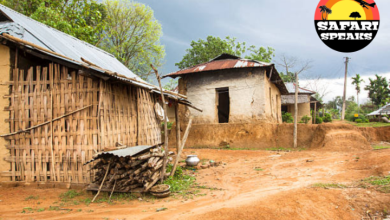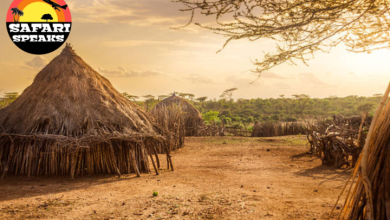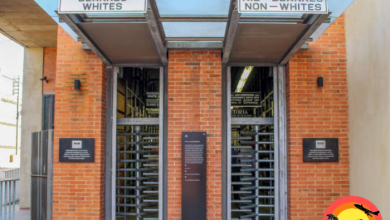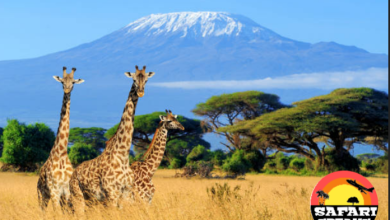The Death and Burial Process Of A Titled Man In Igbo Land
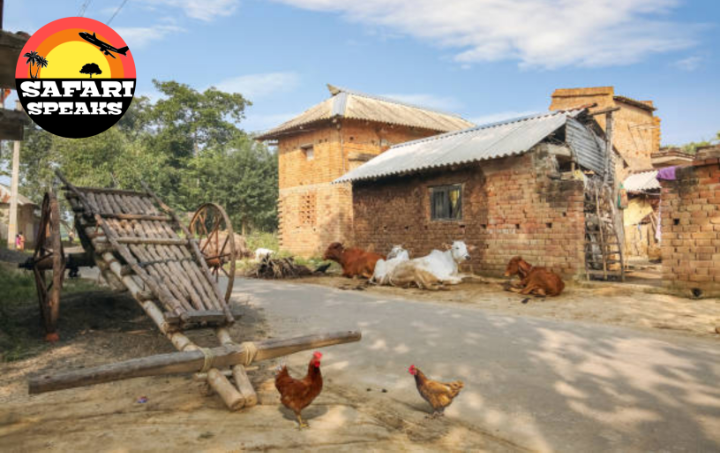
The death and burial process of a titled man in Igbo land is seen as special and unique because of the preferential treatment given to them. It is not far-fetched that If a titled man dies, an image of the man (chief) would be carved or made by an artist at the side of the deity in the compound.
The deity “Ndi ichie” is always in the centre of the compound. It faces the entrance gate ‘Uzo-ama’ in front of the deity. There was a small hut ‘nwa-obi‘. It always faces the deity (Ndi Ichie). That hut has a door at the side facing the deity. All the things used for morning prayers and minor sacrifices were kept there in a box called “okonikpa“. Such things were ofo, chalk (nzu), iron hooks, small pieces of ‘asusu‘ cuttings and many other things.
A human image constructed with a banana stem was made. It was called ‘ebube ogalanya‘. It would be dressed like a chief with a helmet on the head, and a staff in its right hand. It was constructed on a small wooden round seat. The daughter of the dead man would go to sit by the side of it The daughter would take one good cloth two yards away from the clothes presented by family members, in-laws and well-wishers and tie a bell known as ‘atanu‘ at one end of it. That would be hung on the spear, beside the ‘ogilisi‘ plant.
This plant represents a deity. The first daughter of the man sat by its side. Some other elderly women in the family might also go to sit by the other side of it if they liked it. The ‘ufie‘ musical player would be in attendance. The player was always somebody who played ‘Uyo‘ an accompanying musical instrument. The music was always interesting. Titled men danced it. Men and women who had celebrated burial ceremonies Of their dead fathers would be entitled to dance to the music. The daughter who sat by the ‘ebube ogalanya‘ would first dance the music before other qualified men and women joined.
Whenever the music started the daughter would be called out to demonstrate dance. She would go to the diety and take the cloth hung on the spear beside it. She would hold the ‘ofo’ in her right hand and hang the cloth with the bell on the shoulders. When the music starts, she would dance to the ‘ufie’ and stop the music. This was the first round. She would repeat such four times. After the fourth time, the rest of the qualified persons would join to dance to the music. Such ceremony would continue for about seven native weeks ‘izu asaa‘.
During that period family groups would assemble in the premises to receive sympathizers who usually come with wine and money. There would be a presentation of kola nuts by the chief mourner and the family groups. ln-laws made constant visitations. Whenever plenty of wine was brought by individuals or groups, a gun would be fired. The gunshot was an invitation for family members who lived far away to come. Also. neighbours and other people living far and near were being invited When the wine have been presented by the sympathizers, the chief mourner and each member of the family group would present kola nuts or money in place of kola nuts.
These are put together (kolanuts and money) and presented to the visitors. Sometimes the sympathizers would be served with food. If the kola nuts presented were many, two would be brought out for breaking by the family members and by the sympathizers respectively. The oldest member in each group would break the kola nut. The remaining kola nuts would be handed to the visitors to go with. There would be no breaking of kola nut protocols. The kola nuts would simply be broken and shared. The person who would break the kola nut might only say ‘ozo emezina‘ meaning we pray that such a death would not occur again.
If any money accompanied the kola nuts, the visitors would take them and the money would be for the leader Of the group. The kola nuts taken home Would be shared by the members who escorted him. The whole kola nuts would be shared into two halves – one part for the other members who would choose the kola guts in order of seniority.
During the seven native weeks’ stay, the chief mourners would make consultations with the family members to fix a date for the last burial ceremony. The date must be on Nkwo market day. But before fixing the date all the persons and groups must be communicated and contacted duly. The in-laws would be called on a fixed date. They would be informed of the date for the last burial ceremony. This is called “Oku Ogo”. Food will be prepared for them that day. Each in-law must attend with a gallon of wine – ‘nkwu enu’ or ‘ngwo‘. The in-laws would be told the date and asked to say how they would come.
Any in-law coming with a cow should say it so that his in-law (the mourner) would know what to present to them in return. The burden of the ceremony was almost shared by the in-law marrying the first daughter of the deceased would be the greatest. It was less burdensome for the in-laws whose daughters were married by the dead person’s sons. Each In-law is required to come with a dancing group. In those days, the Ojionu dancing group, and Icheoku dancing groups are the most common masquerade group for men.
The Death and Burial Process Of A Titled Man In Igbo Land
The death and burial process of a titled man in Igbo land is a tradition that have been long practised and preserved. It has been a continual practice that has been taking place occasionally and has helped to preserve the unity and bond among the igbos by giving them a common unique cultural practice that will help the stand out among others. On the day of the ceremony, the in-laws would come with cows or goats accompanied by dancing groups. They would come with many jars of wine, food and money. There would be several gunshots fired by each of the in-laws on arrival at the compound. Each in-law and his group will then be given a position to stay for the reception.
On entering the compound, the in-law will take the lead, and followed by friends’, well-wishers and musical groups. The wife would come out to receive the husband, and all would dance round the compound for some time. The daughter of the deceased whose husband came would be getting gifts of money from her husband, friends and well-wishers. When the dance has ended the in-law and his group would be ushered to their seats. The in-law would make presentation to the chief mourners- the children of the deceased and the ‘adas‘ ‘inyomonas‘ and the entire family group.
The wife of the deceased would be seen in her apartment. The presentations of each in-law would be noted or recorded. Such presents include cow, goat, or fowl, and palm wine. The wife’s presents were usually in money (cash), food and wine. The wife’s food would be provided by the husband. These would be given to her privately. The food and wine for the in-law and his group would presented.
After the in-law had finished the presentation, those who accompanied him would individually give some money to the member’s deceased family. The daughters of the deceased whose husband pays condolence visits gets more gifts. After the presentations, the in-law and his would dance round to the admiration of the crowd for a while before they settle down at the place preserved for them. Their kola nut, food and wine would be presented to them by the chief mourner. Some times money light be presented by other members of the family in place of kola nut. The food and wine would then be shared.

